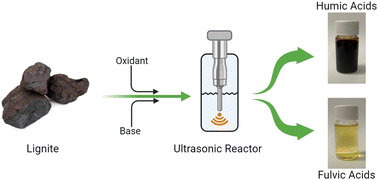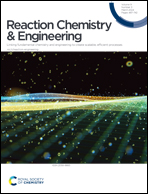Production of humic and fulvic acid analogs through the ultrasonication of low-rank lignite coals
Abstract
We present a process utilizing an ultrasonic horn-type reactor for the conversion of lignite-coal into humic and fulvic acid analogs, achieving a 72% yield of humic acid analogs and 92% conversion. This advancement not only improves the product quality but also reduces traditional reaction times as the best yield was reached after 30 min. The parameters were fine-tuned to achieve the highest possible conversion of humic acids. Comprehensive characterization, including ISO19822, FT-IR, TOC, CHN analysis, potentiometric titration and TGA, authenticated the product's transformation and revealed its chemical and physical properties such as the existence of COOH and OH bonds. Kinetic analysis with six pathways showed the possibility of the conversion of lignite to humic acids, fulvic acids and CO2 along with the possibility of humic and fulvic acids converting to CO2. Activation energies and preexponential factors underscore the preferential formation of humic acids over fulvic acids and CO2. Ultrasonication allows for the production of OH radicals that attack the lignite molecules which in turn allows for oxygen incorporation into the structure of lignite. This oxygen enrichment helps with increasing OH and COOH functional groups. Crucially, this method produced zero direct gaseous CO2 emissions, marking it as an eco-friendly alternative in lignite processing to humic acid substances.



 Please wait while we load your content...
Please wait while we load your content...